Langley Park
© 2012 David Eyre
Norman Brearley’s airline, Western Australian Airways (WAA), began the first airline operations in Australia in 1921 (a year before Qantas), based at Langley Park. Since then, aviation has played a key role in the development of Western Australia.
Norman Brearley foresaw a great future for aviation, which began when he saw the first aeroplane flight in Western Australia, at Belmont Park Race Course in January 1911.
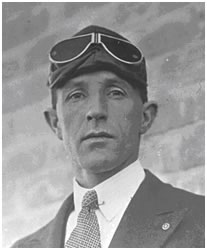 LEFT: Norman Brearley
LEFT: Norman Brearley
During World War One, Brearley joined the Royal Flying Corps, becoming a pilot after less than two hours' instruction. As a fighter pilot over the Western Front, he shot down several enemy aircraft before he himself was shot down and seriously wounded, with both lungs punctured by bullets. After recovering, he became an advanced flying instructor.
In July 1919, Brearley brought two military surplus Avro 504J aircraft back to Perth, to demonstrate the potential of aviation. He conducted a public demonstration and joyride flights in 1919 from the WACA, Claremont Showgrounds, and Loton Park (East Perth Football Ground).
Initially, he based the aircraft in a hangar next to Belmont Park Race Course, but he felt that it was too far from the city centre, and not suitable for use as an airfield, being too small, boggy and subject to flooding from the Swan River.
When flying over the city of Perth in late 1919, Brearley noticed a rectangular patch of flat ground next to the river, extending east from Victoria Avenue. He enquired about using this land as an airfield, and Michael Durack invited Brearley to build a hangar at the foot of his property (263 Adelaide Terrace). Even though it was public land, and without official permission, Brearley accepted.
In late 1919, he moved the Avro hangar from Belmont to the northwest corner of the Langley Park, where Terrace Road now meets Victoria Avenue.
BELOW: Brearley (in the white suit) and one of his Avro 504J aircraft in front of his first hangar at Langley Park, where Terrace Road now meets Victoria Avenue. This north-facing view shows houses along Adelaide Terrace.
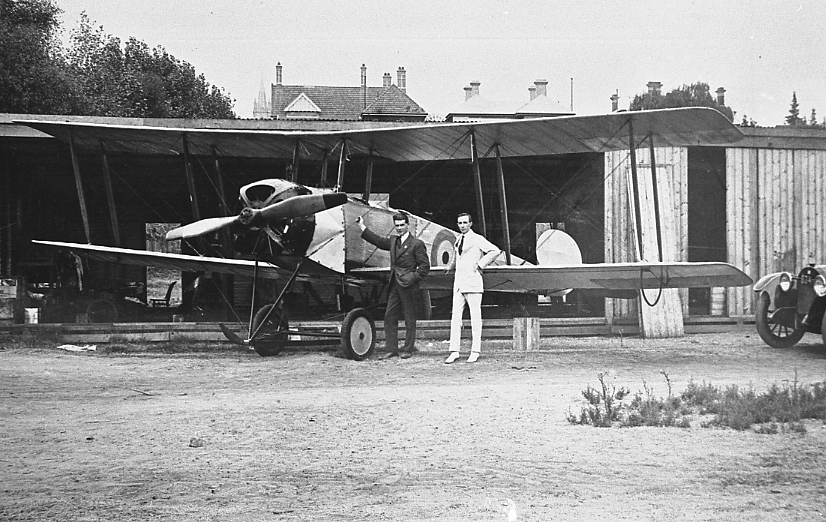
At that time, the field had only recently been formed through land reclamation next to the Swan River, and was not named Langley Park until 1938. At 275 by 180 metres, it was one third of the length it is today.
By 1920, Brearley was conducting charter and joy flights from country towns all over WA, from Albany in the south, to Onslow in the north, and Kalgoorlie in the east. As there were no airfields and very few cars, he landed on bush tracks or roads. The experience which Brearley gained whilst operating in this desolate, remote area later proved useful when he established his airline.
In May 1921, the Federal Government advertised tenders for the first subsidised air-mail and passenger contract in Australia between Geraldton and Derby. Perth was initially not included in the route due to Government policy of non-competition with existing railway services.
On 2 August, 1921, Brearley was advised that his tender had been accepted. He immediately confirmed an order for six Bristol Tourer aircraft and set about establishing the first airline in Australia (and the Southern Hemisphere), Western Australian Airways. On 23 August 1921, Brearley was issued with the first pilot's licence in Australia. One of the pilots he recruited was Charles Kingsford-Smith, who later became world famous for his long-distance record flights.
On the afternoon of Saturday 3 December 1921, several thousand people gathered at Langley Park for an inauguration ceremony by the Governor of WA. The next morning (4 December), three Bristol Tourers took off from Langley Park bound for Geraldton, to prepare for the first service from Geraldton to Derby the following day.
On Monday 5 December 1921, Western Australian Airways took off to begin Australia's first scheduled airline service. Tragedy struck when one of the aircraft crashed near Murchison House Station, killing both men. The two remaining aircraft were flown back to Perth the next day.
In mid-December 1921, Brearley checked the airfields on the route and found them to be unsafe. He informed the Government that services would be suspended until they improved the airfields. He resumed the service in February 1922.
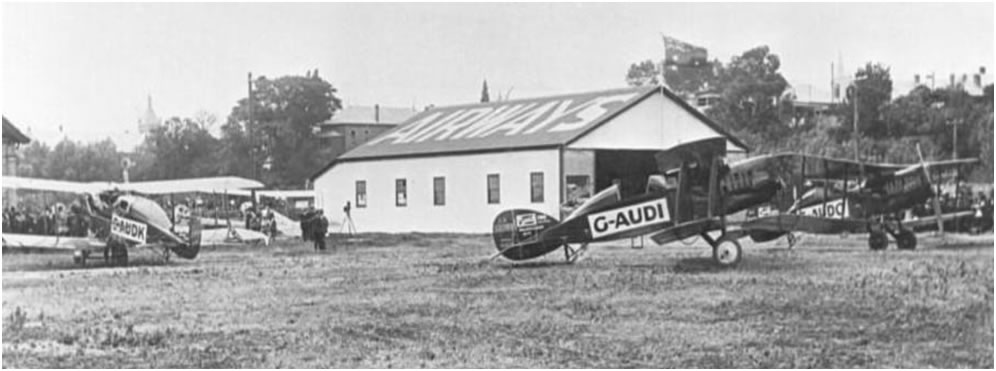
ABOVE: Three Bristol Tourers of West Australian Airways, near their hangar at Langley Park (where 114 Terrace Road is now located) just before the first service.G-AUDI crashed on the first service, killing both aboard.
The success of Brearley's operation led to the Government awarding a similar air service contract in Queensland and the Northern Territory, to QANTAS (Queensland And Northern Territory Aerial Services), but soon after starting, QANTAS ran into difficulty. The Government asked Brearley to assist QANTAS, and he provided all of his safety and operating procedures, setting a foundation of safety for which Qantas later became world-famous.
In 1923, the Federal Government agreed to extend the airmail service to Perth, despite protests from railway operators. Later that year, the Government acquired the south-western part of the Maylands peninsula for use as Perth's first official airport. Brearley was given approval to move his hangars from the unofficial airport at Langley Park, which he had used since 1920, to Maylands Aerodrome. On 15 January 1924 at 5.20 pm, the first WAA aircraft on the north-west service landed at Maylands, ending an interesting era at Langley Park.
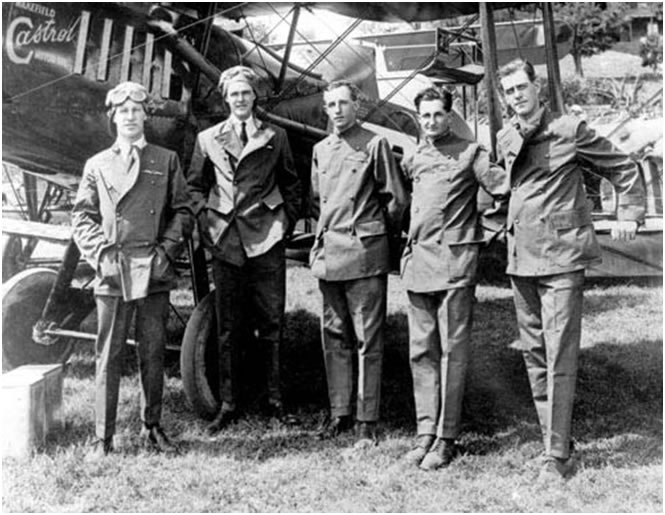
ABOVE: Sunday 4 December 1921 - pilots prepare to depart from Perth’s unofficial "airport" at Langley Park to Geraldton, prior to the first airline service the next day. Left to right: Charles Kingsford Smith (later famous for record flights), Bob Fawcett (killed the next day on the first flight) Norman Brearley, Len Taplin,Val Abbott.
BELOW: A Bristol Tourer of Western Australian Airways at a remote location, showing the primitive and harsh conditions in which they operated at that time.
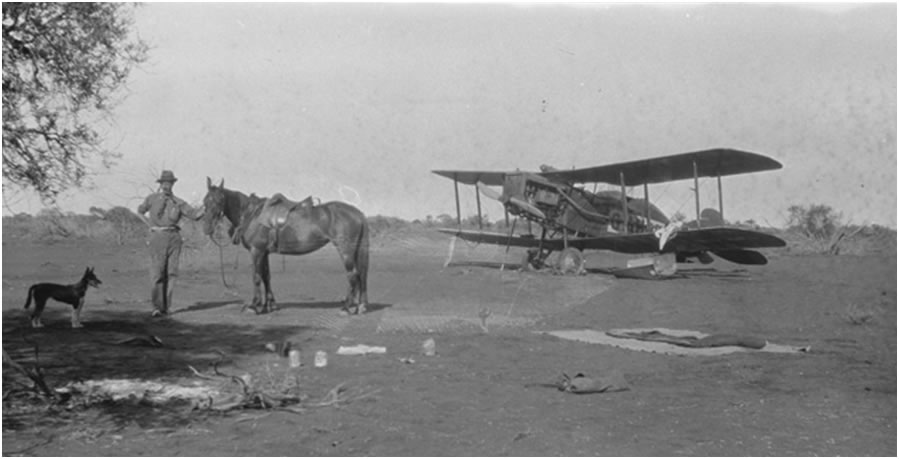
Recent use of Langley Park as an airfield
After WAA moved to the official airport at Maylands, Langley Park was lengthened further through land reclamation. Whilst mainly used for sporting and community events, it is still used occasionally as an airfield.
The Sport Aircraft Association of Australia held large scale fly-ins every three years, each being on the Labour Day long weekend in March, from 1984 to 1999. Another fly-in was planned for 2003, but cancelled due to massive insurance costs. The largest gathering was 134 aircraft at the 1996 event.
A number of other commemorative flights have been held at Langley Park. The larger events were held in 2002, 2003, 2004 and 2009, with up to 17 aircraft landing. Others involved long-distance flights by single aircraft to raise funds for charity.
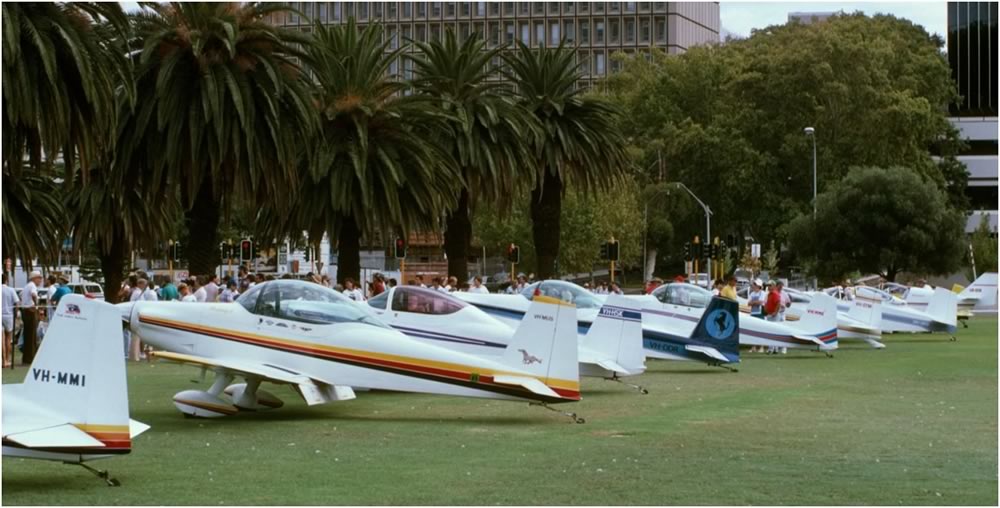
ABOVE: Aircraft parked along Victoria Avenue during the 1990 SAAA fly-in. (Photo © David Eyre)
The Red Bull Air Race World Series was held each November from 2006 to 2008, and in April 2010. The race course consisted of inflatable pylons on the Swan River. Langley Park was used as the airfield, with a temporary control tower and hangars. Up to 14 pilots and aircraft from all over the world were based there for up to six days, and up to 300,000 spectators attended each event.
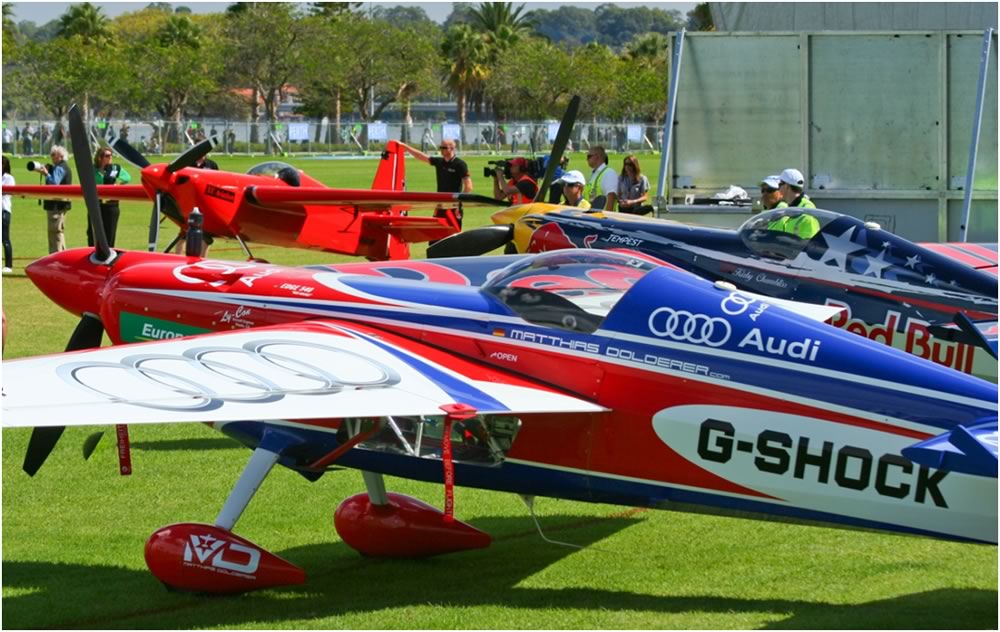
ABOVE: Aircraft at Langley Park during the 2010 Red Bull Air Race. (Photo © David Eyre)
In March 1995 and September 1997, a Caribou transport aircraft of 38 Squadron based at RAAF Pearce landed at Langley Park for a medical evacuation exercise. These were the largest aircraft to ever land at Langley Park.
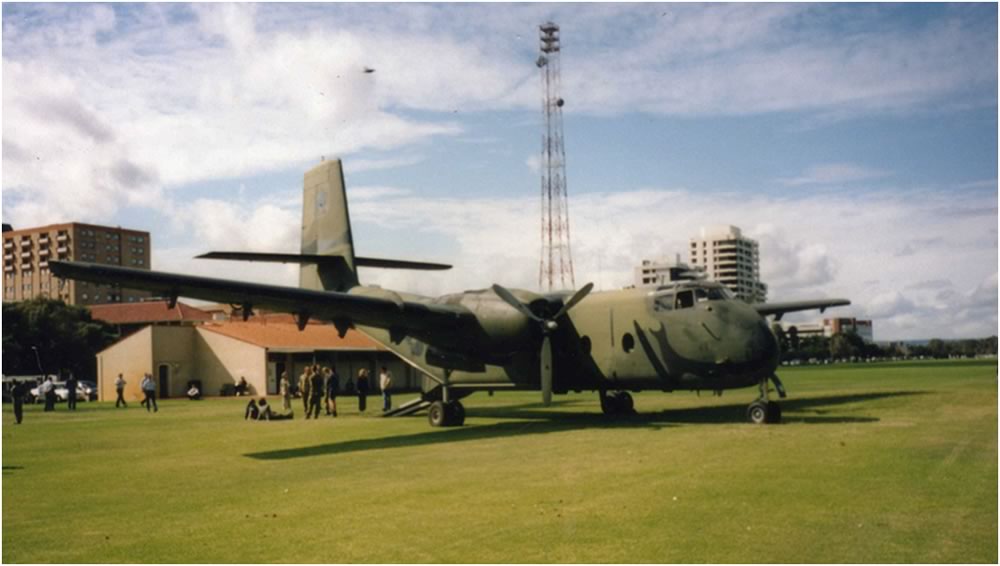
ABOVE: An RAAF Caribou at Langley Park (Photo © Frank Conner - used with permission).
Langley Park has also served an important role in emergencies. In March 1999, a Sikorsky S-76A RAAF rescue helicopter landed at Langley Park with medical evacuees from the hospital at Moora, which had been flooded. In December 1997, a Tiger Moth of the Royal Aero Club of WA suffered a loss of engine power over Perth, and made an emergency landing at Langley Park.
In May 2011, Langley Park was given an interim listing on the State Heritage Register, recognising its historic significance as the base for the first regular airline service in Australia.
Langley Park’s pioneering role in the development of airline operations in Australia is worthy of recognition by aviation events such as fly-ins, which also boost the local economy by attracting visitors from around the globe.
Langley Park is indeed unique – it is the only place in the world where aircraft fly from a grass airstrip in the heart of a city, continuing to build on a proud aviation tradition which has lasted for over 90 years.

 LEFT: Norman Brearley
LEFT: Norman Brearley 





